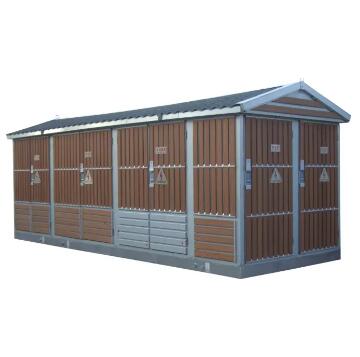Revolutionizing Power Distribution: Unraveling the Secrets of Cabinet Type Substations
2024-01-09
Introduction:
In the intricate web of electrical distribution systems, the evolution of substation technology has been a key driver in ensuring efficiency, reliability, and space optimization. The Cabinet Type Substation emerges as a revolutionary solution, reshaping the landscape of power distribution. In this blog post, we delve into the essence of Cabinet Type Substations and explore the distinctive features that set them apart from traditional substations.
Defining Cabinet Type Substation:
A Cabinet Type Substation is a compact and self-contained unit designed to transform and distribute electrical power in a condensed space. Unlike traditional substations, which often sprawl across larger areas, these substations are engineered to fit into compact cabinets, providing a space-saving alternative without compromising on functionality.
Key Components and Design Features:
1. Transformer Enclosure:
One of the defining features is the transformer enclosure, housing transformers that convert voltage levels for efficient power distribution. This compact design allows for substantial space savings compared to traditional substations with large transformer yards.
2. Switchgear and Protection Devices:
Cabinet Type Substations integrate switchgear and protection devices within the confined cabinet space. These components play a crucial role in controlling and safeguarding the electrical system, ensuring reliable and secure power distribution.
3. Modular Design:
The modular nature of Cabinet Type Substations allows for scalability and flexibility in system design. This adaptability is particularly advantageous in situations where future expansion or modifications may be required.
4. Compact Footprint:
Traditional substations often require substantial real estate for installation. Cabinet Type Substations, on the other hand, are designed with a compact footprint, making them ideal for urban environments, industrial complexes, or areas with limited space availability.
5. Weatherproof Construction:
To withstand environmental elements, Cabinet Type Substations are constructed with weatherproof materials. This ensures the resilience of the equipment against harsh weather conditions, enhancing their durability and reliability.
Differences from Traditional Substations:
1. Size and Space Utilization:
Traditional substations are characterized by expansive layouts, with separate areas for transformers, switchgear, and other components. In contrast, Cabinet Type Substations consolidate these elements into a compact cabinet, optimizing space utilization.
2. Ease of Installation:
The installation of Cabinet Type Substations is generally quicker and more straightforward compared to traditional substations. The modular design and pre-assembled components contribute to a more streamlined installation process.
3. Flexibility and Mobility:
Cabinet Type Substations offer a level of flexibility and mobility not typically associated with traditional substations. Their modular design allows for easier relocation or expansion, catering to changing operational needs.
4. Reduced Environmental Impact:
The smaller footprint of Cabinet Type Substations minimizes the environmental impact, making them a more sustainable choice. They require less land, result in lower material usage, and are designed for efficient energy consumption.
Conclusion:
The Cabinet Type Substation represents a paradigm shift in the world of power distribution. Its compact design, modular flexibility, and space-saving features make it a compelling solution for modern electrical infrastructure needs. As technology continues to advance, these substations stand at the forefront, proving that innovation and efficiency can go hand in hand, reshaping the way we think about and implement power distribution systems.



